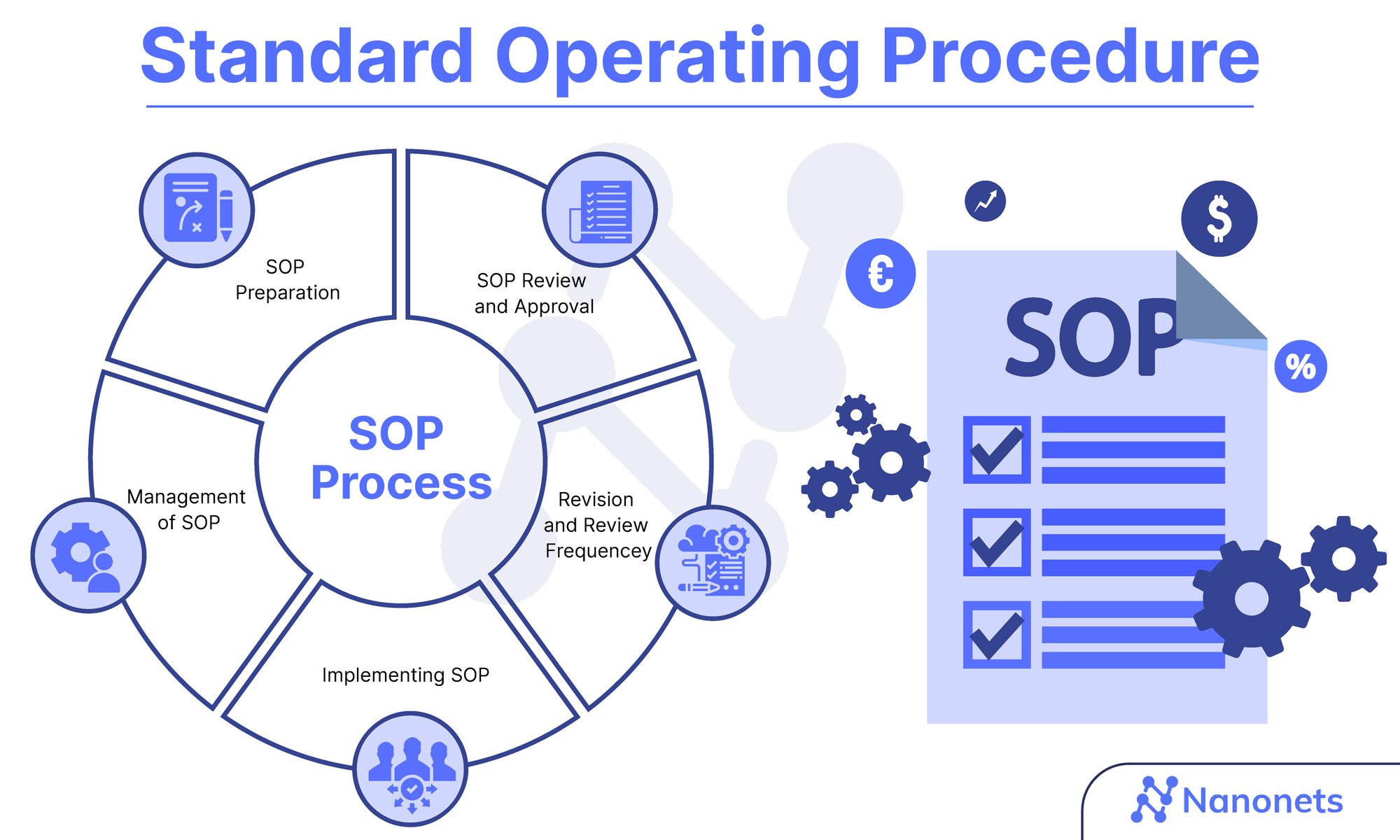
1. Data Entry - An Introduction
Organizations and companies in almost all sectors depend heavily upon data for their operations. Data is imperative for informed decision-making, response to change, and establishment of strategic goals. Manual data entry has been the mainstream of data management.

Traditionally, manual entry involved transferring data from various documents into record books, general ledger books, etc. In recent times, manual data entry entails manually entering specific and predetermined data such as customer name, business type, money amount, etc., from various sources, including paper bills, invoices, orders, receipts, etc., into a target program. The target program could be handwritten record books, spreadsheets, computer databases, etc, depending upon the type of business.
This work is usually performed by data entry operators who have been trained to look for relevant data from their sources and transcribe them into the target digital medium. Manual data entry uses an input device such as a keyboard, data recorder, or optical scanner.
Looking to automate the manual data entry process? Give Nanonets™ Intelligent Automation Platform a spin for higher accuracy, greater flexibility, post-processing, and a broad set of integrations!
2. Prevalence of the Manual Data Entry Process
While automated data processes are now available for data entry, many organizations continue to use manual data entry as a cheap way of processing documents. A 2019 survey found that 48 percent of companies employ manual data entry in industrial processes.
The primary reason cited for the adoption of manual data entry operations is the absence of capital costs associated with software implementation, deployment, and maintenance. Other reasons include inertia in training employees and hiring of new staff with technical knowledge.
3. Why do Companies Continue to Use Manual Data Entry?
Some of the reasons cited by organizations for continuing to adopt manual data entry are justified by the following advantages:
- The scale of business: Small businesses that do not have a large client/business and limited operations find manual data entry sufficient for their needs.
- Financial commitment: Small businesses may not have the budget for large data entry operations and may not be able to commit to automated systems.
- Proprietary information: When the data to be entered is sensitive and the owner or higher management are the only people with access to it, it helps to involve fewer people in the data entry process. This works both for and against the manual data entry process. On the ‘for’ side, the person responsible for the data can key in the data himself/herself, thus preserving the information. On the “against” side, automated data entry can exclude the presence of another person in the data management process. Again, this depends on the scale of the operation.
- Better control: Manual data entry offers scope for human judgement in selecting data and manipulating it for various purposes. This can be perceived as better control over the data.
- Independence from device vagaries: Manual entry does not often require an internet presence or specialized software, which excludes issues of hacking or software failures.
Looking to automate the manual data entry process? Give Nanonets™ a spin for higher accuracy, greater flexibility, post-processing, and a broad set of integrations!
4. Challenges with the Manual Data Entry Process
Manual data entry may be good for small-scale operations, but it restricts expansion and inhibits progress due to the following reasons, all of which are interrelated:
1. Cost
The cost penalty associated with manual data entry is counterintuitive. Most companies that choose manual data entry cite the cost escalation of intelligent automation as a reason, but this is misleading. Manual data entry involves hidden costs. The cost of employees performing the manual data entry is the obvious cost element, but the hidden cost is that of error correction. Manual data entry errors can affect the bottom line. It has been shown that incorrect data costs businesses at least 30 percent or more of their revenue. Verification of data accuracy and correction of errors are added cost components that are often overlooked.
The fiscal cost of manual data entry is defined by the 1-10-100 data entry rule. The rule states that verification of data accuracy at the point of entry costs $1, cleaning up of errors costs $10 in batch form, and uncorrected errors cost the company $100 or more. This cost could be more if the data involves money. A 2018 Goldman Sachs report states that the direct and indirect costs of manual, paper-based invoice processing costs $2.7 trillion for global businesses.
Thus, resorting to manual data entry for cost savings is being penny-wise-pound foolish.
2. Manual Data Entry Error Rate
Raw Data entry not followed by verification steps has been shown to have an error rate as high as 4%. To put that in perspective, there are 2 errors for every five entries made. This is a significantly large number that can affect even small sets of data. A 2009 experiment found that data entry operators make up to 10.23 errors when processing the data from thirty datasheets.
The high error rates associated with manual data entry can be attributed to a variety of reasons, from inadequate training of data entry professionals to human fatigue, misinterpretation of data etc. According to ‘Data Quality Assessment’, errors can arise from missing values, which can, in turn, create discrepancies in the desired output.
Manual data entry errors could be debilitating to businesses. At the simplest level, it can affect internal operations and/or mar customer satisfaction or external supplier relationships. When the data entry error involves money, a company, big or small, could overpay/underpay vendors, overcharge/undercharge clients, disrupt the accounting and auditing processes and get into financial/legislative trouble. There have been instances where data entry errors have cost companies millions of dollars.
According to a survey, 37 per cent of manufacturing professionals do not trust the reliability of manually entered data for making strategic decisions. This points to a tremendous waste of time and human capital in an increasingly futile task.
The outer limit for data entry error rate is generally acknowledged to be 1%. Error rates higher than this are a matter of grave concern for the business. Thus, quality checks must be integrated into the manual data entry process. Eye-ball double-checks are not failproof – the human eye relies on visual cues to identify mistakes and such cues could be easy to miss, especially with large sets of data. Double-blind data entry is practised by some organizations in which two operators input the data independently and a validation software checks for discrepancies between the two sets of data. As can be expected, this requires more manual work hours, and time delays when there are discrepancies.
3. Slow Turnaround Time
Manual entry of data is time-consuming. A good rate of data entry from paper documents ranges between 10,000 and 15,000 keystrokes per hour. Complex data that require comprehension before being entered, would delay the process further. Thus entering 400 units of data would take a competent operator between 8 and 10 minutes, which becomes unacceptable if the volume of data is high.
Slow turnaround time is not a stand-alone problem. To avoid delays, companies would need to hire good data entry operators, who must be trained – this leads to more delays and extra expenditure. Even the best data entry operator is prone to making mistakes when the data entry task is repetitive and/or involves a large volume of data. Or, the companies would have to outsource the data entry operation, which again costs money.
4. Human Boredom
The process of manual data entry is repetitive and tedious and can be demoralising, especially when the operator has the choice of better and more productive work in the company. Manual data entry could thus lead to employee dissatisfaction and a high turnover rate. These are serious problems in today’s highly competitive business environment.

Three tasks associated with manual data entry have been reported to be killers of productivity and employee morale.
- Data Collection: Fifty-five per cent of surveyed employees cite collection, uploading, and synching data to be the least productive task of manual data entry.
- Getting Approvals: Thirty-six per cent of surveyed employees believe that getting approvals, sign offs, and confirmation can kill productivity.
- Providing Updates: Thirty-two per cent of employees feel that managing status updates and other information takes time off other productive work.
As companies diversify and expand, the amount of data that they deal with also increases exponentially, and manual data capture simply cannot keep up with the processing demands resulting in a “choke point.” This disruption is not a temporary or a one-time problem that would go away with time, because it would be persistent and repetitive, and can adversely affect the scale-up of the organization.
To wit, manual data entry is costly, inaccurate, and demoralizing. These issues can lead to a loss of focus from the core or strategic tasks. Thus, manual data entry cannot support the strategic, sustainable growth of an organization.
Looking to automate the manual data entry process? Give Nanonets™ data entry automation a spin for higher accuracy, greater flexibility, post-processing, and a broad set of integrations!
5. Is Automated Data Entry a Solution?
The word “automation” carries with it a negative social argument of taking jobs away from workers. However, McKinsey Global Institute reports that less than five percent of all jobs consist of activities that can be fully automated, thereby posing no risks to the labor force. Sixty-nine percent of workers surveyed by SmartSheet believe that intelligent automation can reduce wasted time, sixty-six percent believe that it can eliminate human error and fifty-nine percent believe that hours lost to repetitive boring tasks can be recovered for useful tasks, through automation.
The advantages of automated data processes over manual data entry processes are many:
- Automation enables more accurate data entry over manual entry of structured data.
- Automation can considerably speed up the process of data entry, especially when large volumes of data from different sources must be compiled into one format.
- Automation can be used to check for the correctness of entered data. A 2009 experiment showed that entries that were automatically checked via the use of a software system had an average mistake rate of 0.38 errors for thirty data sheets, as against 10.23 errors processed by human volunteers.
- Valuable human time and effort may be redirected to more productive and less tedious activities, which would enhance work satisfaction and retain the workforce.
- Reduction or elimination of paperwork: Digitization of data can eliminate a paper trail that requires space and care to manage and maintain.

6. Deterrents to Shift Towards Automated Data Entry
Despite the known advantages of automated data entry systems, many companies are hesitant to shift to them. Smaller companies perceive complexities and costs. Thus, rather than automating the process, data entry work is often outsourced to experts especially when the conversion of information needs precise skills that are not available within the organization.
Other reasons for hesitance to shift are:
- The use of too many tools that do not integrate: Okta’s 2019 Business @ Work research report states that even small companies deploy an average of 99 apps or other software tools for their functioning. Adding one more that does not integrate with these can be perceived as an unnecessary complication. There are software tools available such as Nanonets that can integrate a range of tools and apps, and come with a tech support team that can help with integration.

- Hierarchical approval process: Many companies work on a hierarchical structure, which requires physical signatures from various levels. It is perceived that automation would not allow such signature-based approvals. Overcoming this could require a change of mindset or the use of software that allows digital signatures from stakeholders.
- Paper form: Most data is in the form of paper documents, and many companies are unaware of OCR and ICR (see the following section) options to convert data from these paper forms into digital data. Documents may also be obtained in various digital formats such as pdf, Xls etc. and most people are unaware of the presence of software like Nanonets that can extract data from various kinds of documents.
- Using different tools for different functions: When a company’s various functions use various tools to manage data, the company may consider it prohibitively complex to bring them under one umbrella.
Looking to automate the manual data entry process? Give Nanonets™ a spin for higher accuracy, greater flexibility, post-processing, and a broad set of integrations!
7. Types and Processes of Automated Data Entry
Automated data entry from paper or other forms of digital documents into a pre-set format starts with the capture of relevant data from the source. Two technologies are typically used for this purpose:
- Optical Character Recognition (OCR): OCR technology captures data from structured documents by converting documents into machine-readable files. Modern OCR tools come with an array of data preprocessing (noise removal, binarization, line segmentation) and postprocessing steps. At the core of any OCR system lies two major components – a feature extractor and a classifier. Some commonly used OCR tools are Nanonets OCR API, Tesseract, OCRopus, Ocular, SwiftOCR and Calamari. The Nanonets OCR API, for example, uses state-of-art AI algorithms that allow the design of custom OCR models. Data can be uploaded, annotated, and the model can be trained easily and seamlessly integrated with existing systems.

- Intelligent Character Recognition (ICR): ICR is an adapted version of OCR wherein handwritten texts can be converted to computer-readable information. It is used for unstructured data extraction from documents such as letters and other handwritten business correspondence. Some ICR software are A2iA Mitek, Parascript FormXtra.AI and LEADTOOLS ICR SDK.
Once documents have been converted using OCR or ICR tools, key information can be extracted from them using automatic data capture software. This is a useful tool for the digitization of financial documents such as invoice, PO and claims processing. Data automation software often uses AI algorithms to look for specific types of information, such as reference numbers, names, addresses, cost, etc. The information that is extracted by this software is output into a company’s preferred format for data integration with already used document types such as CSV, Excel or HTML.
Other forms of automated data entry include the use of paperless forms, in which information is captured directly into a digital medium and stored directly. This involves customizing capture software for each company’s needs.
Barcode scanning technology is another data capture method that allows metadata such as name, address, and contact numbers to be pre-populated into a barcode format, which reduces manual data entry requirement upon return.
8. Steps to Transition from Manual to Automated Data Entry
The transition from manual to automated data entry requires a staged approach with a clear roadmap, involving all participants of the organization. Some of the initial steps to initiate the transition are:
Change of mindset: Sometimes, the switch from manual to automated data entry systems is hampered by inertia. This can be overcome by a simple change of mindset – an open mind, a will to progress and a need to stay competitive in business are the first steps towards the switch.

Determining the goals of automation: It is important to fully understand the goal of digital transformation to build an automated system that aligns with the company's operations and broader vision.
Audit of existing software, systems, and processes: To choose the right automation tool, it is necessary to consolidate the existing tools and their functions and decide on the tools that can be eliminated or integrated into the new software. Such an audit will help in gaining a large picture of what needs to be fixed, updated, or changed.
Collaboration with the IT team: One of the main reasons for the hesitancy of companies to move to automated data entry is the mismatch and poor integration of the existing systems, software and devices. If the company has an IT team, they can be tasked with investigating the sync between systems and finding the cause for the breakdown in data management. The development or purchase of integration software may be decided upon, unnecessary devices/systems discarded, and the data entry software is chosen that can integrate with the useful systems in the company.
Homework on the various data entry tools available in the market: The type of data entry tool required by a company depends on the type of business, the type of data that needs to be entered, the size of the database, the operations post data capture and the integration with existing departments and devices. The IT team can help in this matter, and most data entry software companies have a helpful technical support team that can help in the choice of the software to be installed. Some essential factors that would decide the software to be implemented are,
- budget,
- number of users,
- team’s technical capabilities and
- timeline for implementation.
Creating SOPS across the company: To complete the integration of the various devices and enable the complete switch to the automated system, all stakeholders, departments, and personnel must have a clear understanding of the operation. Creating a standard operating protocol for the company is essential during the implementation of the automation. Other standardization techniques include,
- aggregating data and centralizing data storage to one location,
- company-wide training of personnel on the new tools and systems,
- setting into place audit systems to periodically check compliance with the protocols.

9. Are there Any Drawbacks to Automated Data Entry?
Automated data entry is not infallible. While speed and accuracy are certainly better than manual data entry operations, there is a small risk of errors in automated data entry as well. However, if the data entry software uses AI algorithms, it will learn from past mistakes and experience and improve with use.
Automated data entry is not flexible across all operations. The software and hardware are often designed for specific tasks – they are provided input of a predetermined type, predetermined data is extracted, validates the data according to the instructions provided to it, and presents the data in a chosen format. If the input were to deviate even slightly from the predetermined form, the software could throw out an error or capture wrong data, leading to a less than ideal output.
Automated data entry does not eliminate human involvement. Human intervention will be needed to set up and implement the system, ensure smooth functioning, handle exceptions and errors and keep the system running. The level of expertise for these activities would be higher than required for simple data entry operations.
These drawbacks can be handled through training protocols and keeping the system and software updated. Technical support is also available from manufacturers of these tools in case of problems.
Looking to automate the manual data entry process? Give Nanonets™ document automation software a spin for higher accuracy, greater flexibility, post-processing, and a broad set of integrations!
10. Conclusion
The march of technology necessitates changes in workflow structures and the use of tools that keep companies competitive. Automation of data entry can help companies focus on their core competencies of customer care, innovation, expansion, and productivity.



